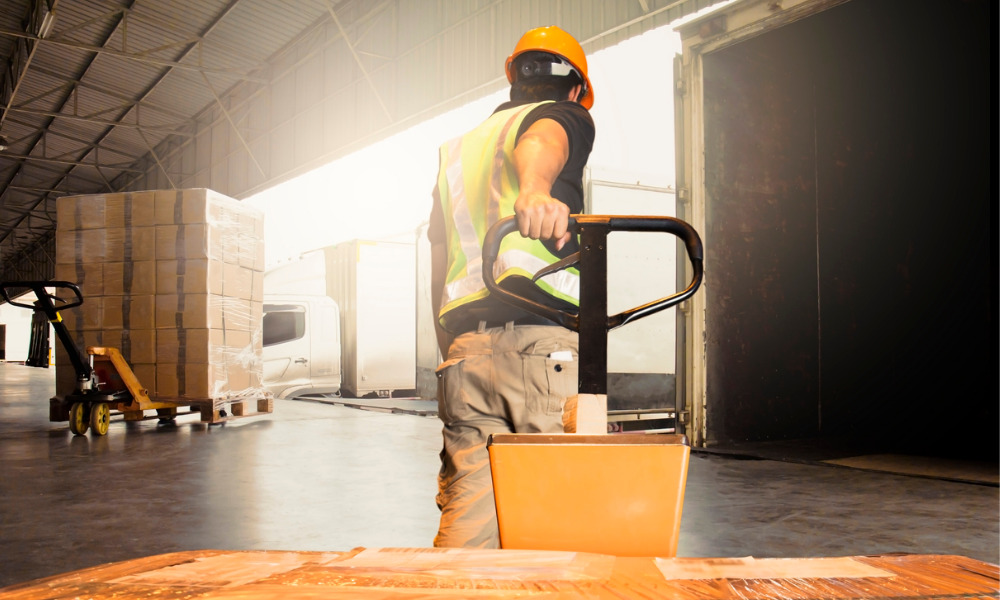How to stay safe on loading docks and around large shipping vessels

Anyone working in the transportation industry that involves the movement and shipment of goods may frequently encounter cargo ships that navigate Canada’s ocean waters and great lakes. But these massive vessels pose many safety risks and have several hazards that must be controlled to keep everyone working around them safe.
The types of clothing workers wear, and the personal protective equipment used is critical to ensuring the physical wellbeing of employees. Workers must also know best practices for moving around ships that are docked and be aware of the moving objects that can present hazards. And there is a critical component of the transportation of cargo that can’t be overlooked, which is the cargo holds themselves and the hazards they present.
PPE and clothing
As with many occupations within heavy industry, the types of clothing workers wear can be the difference between working safely and putting yourself at risk of injury. Under Transport Canada’s safe working practices regulations section it suggests working clothes should be comfortable, but not loose, “so as not to catch on projections or machinery parts when you are working in cramped positions or are
moving about the ship. Gaping pockets, trailing straps, sweat rags, watch straps and rings are easily caught in moving machinery.”
It also suggests proper footwear with slip resistant soles and reinforced toe caps. “Casual shoes such as sandals, moccasins and flip-flops are dangerous on board ships because they offer little protection and add to the risk of tripping or slipping on ladders,” says Transport Canada. It’s not just feet that need to be protected, but hands too, with the agency suggesting wearing gloves to protect against the dangers of ropes, sharp objects, acids, and chemicals.
Head protection is also essential, and Transport Canada says there are a couple of options, a safety helmet, or a bump cap. “The bump cap protects against knocks and bruises when you are working in confined spaces such as the main engine crankcase or a double-bottom tank. But in areas with more serious risks, you should wear a proper safety helmet.” Transport Canada also suggests eye protection, ear protection, and face masks may be required depending on the type of work being done.
Moving around the ship
Transport Canada says most accidents on board a ship are caused by slips, trips, and falls. “Watch for
slippery patches, obstructions on deck, trailing leads, and unguarded openings. Be on guard against any sudden lurch or movements of the ship.” If using stairs, you should make sure to utilize handrails, and when climbing ladders, all equipment should be attached to an equipment belt to allow free use of your hands.
Ships and docks can also have a lot of open gaps to fall through, either near the edge of the ship or open hatches on board. It’s advised to keep clear of operations if you are not directly involved, “especially during mooring and cargo handling or when work is being done aloft,” says Transport Canada.
Falling and moving objects
There are typically many large objects being moved on and off ships, including the cargo containers which poses many safety hazards. Transport Canada says falling and moving objects are common causes of serious injuries around ships. Being aware of what is moving and when is the best way to guarantee you are always in a safe position.
“When working cargo, beware of swinging loads and hooks and cargo falling from sets. As
much as possible, keep clear and don’t work or pass under swinging or suspended loads,” says Transport Canada. It also suggests signallers be used whenever something large is being moved, and if you’re acting as a signaller, it’s important to make sure that the area is completely clear before giving the appropriate signals.
Entering a cargo hold
The Canadian Centre for Occupational Health and Safety has four key pointers for safely entering a cargo hold. It says the hazards should be assessed by a qualified person before anyone enters the cargo hold. This means checking to make sure it is well ventilated, “with an adequate level of oxygen and free of toxic and flammable gases.” An entry permit is usually required and must be issued and signed before anyone can go inside.
The CCOHS also suggests having an effective communication system established, and have the workers test it before it is relied upon. “If required post an attendant outside the space,” says the CCOHS. Part of the preparations should also include having a rescue plan that everyone knows and fully understands. “Check that rescue equipment is nearby and ready for use. Immediately evacuate the cargo hold if an alarm goes off.”
Follow these tips and they will help control the safety hazards while working around cargo ships.





